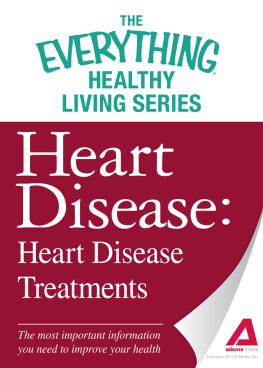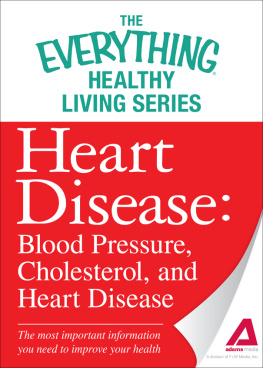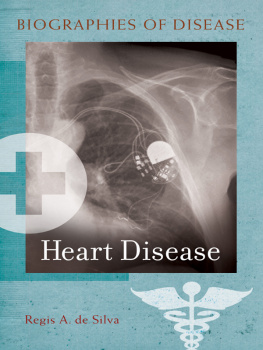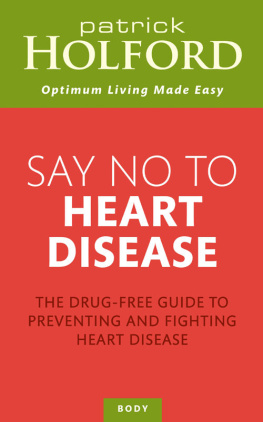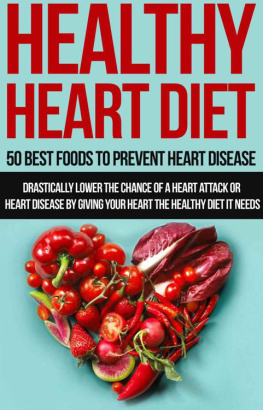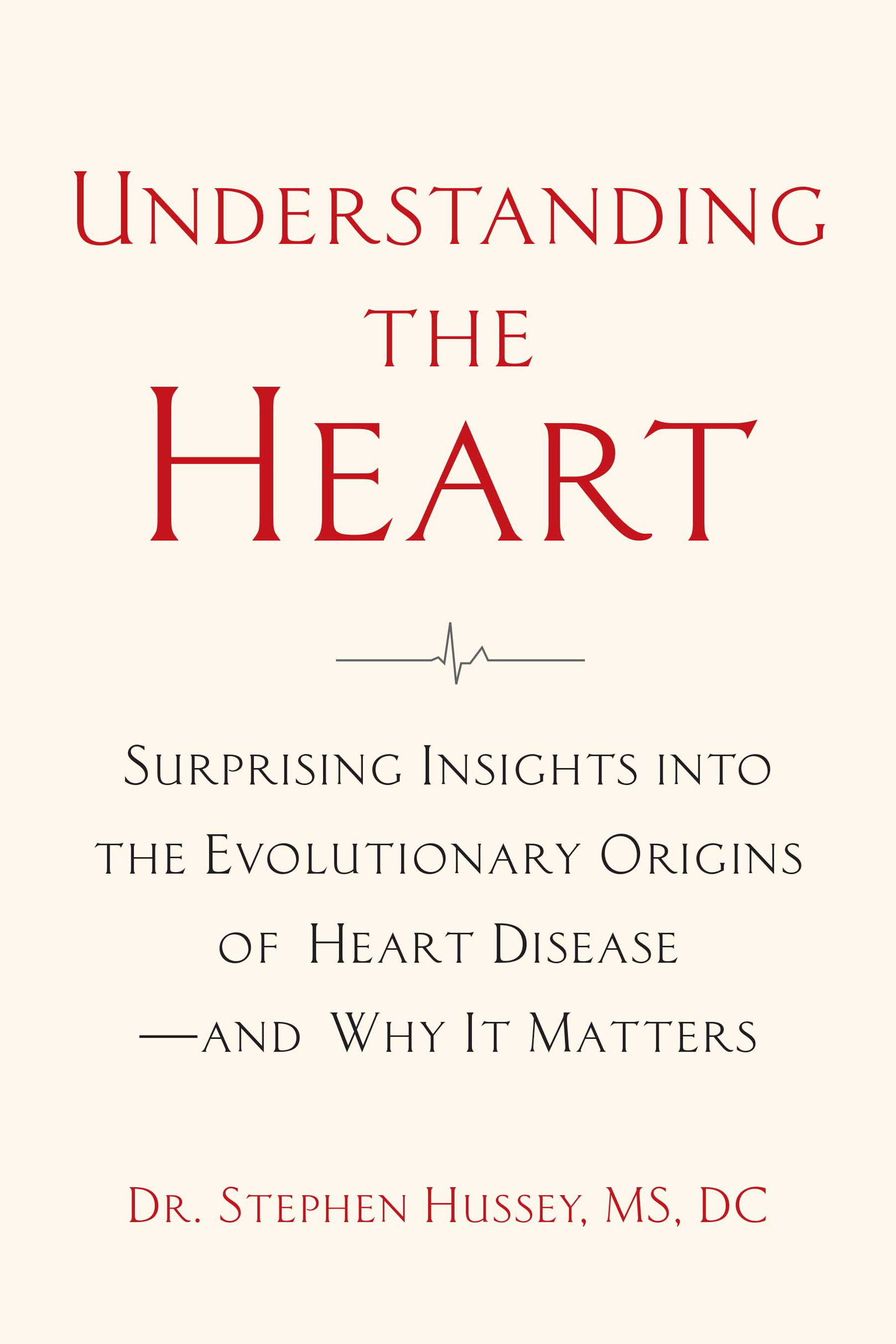Contents
List of Figures
Guide
Pagebreaks of the print version
UNDERSTANDING THE HEART

SURPRISING INSIGHTS INTO THE EVOLUTIONARY ORIGINS OF HEART DISEASEAND WHY IT MATTERS
DR. STEPHEN HUSSEY, MS, DC
Chelsea Green Publishing
White River Junction, Vermont
London, UK
Copyright 2022 by Stephen Hussey.
All rights reserved.
adapted from illustrations in The Fourth Phase of Water, used with permission from Dr. Gerald Pollack, PhD.
No part of this book may be transmitted or reproduced in any form by any means without permission in writing from the publisher.
Originally published in 2021 by Stephen Hussey as Understanding the Heart.
This edition published by Chelsea Green Publishing, March 2022.
Project Manager: Patricia Stone
Developmental Editor: Brianne Goodspeed
Copy Editor: Deborah Heimann
Proofreader: Diane Durrett
Indexer: Shana Milkie
Designer: Melissa Jacobson
Page Layout: Abrah Griggs
Printed in the United States of America.
First printing March 2022.
10 9 8 7 6 5 4 3 2 122 23 24 25 26
Library of Congress Cataloging-in-Publication Data
Names: Hussey, Stephen, 1986 author.
Title: Understanding the heart : surprising insights into the evolutionary origins of heart disease-and why it matters / Dr. Stephen Hussey.
Description: White River Junction, Vermont : Chelsea Green Publishing, [2022] | Includes bibliographical references and index.
Identifiers: LCCN 2022003453 (print) | LCCN 2022003454 (ebook) | ISBN 9781645021308 (paperback) | ISBN 9781645021315 (ebook)
Subjects: MESH: Heart Diseases | Heartphysiopathology | Complementary Therapies | Biological Evolution | Healthy Lifestyle
Classification: LCC RC682 (print) | LCC RC682 (ebook) | NLM WG 200 | DDC 616.1/2dc23/eng/20220209
LC record available at https://lccn.loc.gov/2022003453
LC ebook record available at https://lccn.loc.gov/2022003454
Chelsea Green Publishing
85 North Main Street, Suite 120
White River Junction, Vermont USA
Somerset House
London, UK
www.chelseagreen.com
Contents
It happened shortly before noon on January 5, 2021. I was in my kitchen making lunch when I turned to get something out of the refrigerator, and felt a sudden pain in my chest. At first, I thought my pec muscle was tightening up after the workout Id done forty-five minutes prior. But then the pain intensified, and soon it was so bad I couldnt continue cooking. I turned off the stove, stood still for a moment in the kitchen, and thenfeeling flushed and hotwalked outside, into the backyard, to sit for a minute and cool off.
Outside, the pain continued to intensify. I realized that whatever was happening to me wasnt normal, and that I needed to get help immediately. I thought for a moment about driving myself to the hospital, but the mounting intensity in my chest convinced me to call 911 instead. When the EMTs arrived, I walked a few steps to the stretcher and off I went in the back of an ambulance.
Inside the ambulance, the pain ratcheted so much that I couldnt keep a lid on it. I felt sorry for the EMT riding with me, who had to listen to my wails. When we arrived at the hospital he wheeled me into the ER and handed the doctor a printout. The doctor looked at it and instructed her team: Possible STEMI, prep the cath lab.
An ST-elevation myocardial infarction, or STEMI, is a heart attack in which one of the three major arteries gets blocked. When a STEMI occurs in the left anterior descending (LAD) coronary artery, as mine did, it is known as a widowmaker because only 12 percent of people who experience them outside of a hospital setting survive.
The medical team wheeled me into a room, cut off my shirt, took off my pants and underwear. I felt like there were a million hands on me inserting IVs and prepping for the cardiac catheterization. Nurses bombarded me with questions about my health and how long I had been feeling this pain. I remember asking them not to call my parents just yet; I didnt want to burden them. Eventually, the nurses wheeled me out of the room and into an elevator, and up we went to the lab.
Once in the catheterization lab, there were more hands, everywhere. At first, they tried to go in through the radial artery in my wrist, before abandoning that for the femoral artery. There was a sudden cold sensation on my groin as they sterilized the site. A male voice next to my left ear told me I was doing great and that it was going to be okay, but someone put defibrillator pads on me just in case. I heard the welcome instruction to administer morphine and from there it got hazy, but the pain eased as people worked diligently all around me. When I started shivering, someone covered me with warm blankets.
At the end of the procedure, the interventional cardiologist stood at my side and told me that although hed found minimal atherosclerosis, a major acute clot had formed in the LAD artery, the largest coronary artery. He performed a balloon angioplasty, placed a stent, and told me it went in beautifully. I uttered an exhausted thank you before the man who saved my life turned and walked away.
I make my living as a chiropractor, so though Im not an MD, I have enough training in anatomy, physiology, pathology, neurology, nutrition, and clinical diagnosis to understand the gravity of what I was experiencing that January afternoon, even while it was playing out.
More importantly, Ive lived with autoimmune type 1 diabetes since the age of nine. Even as a child, I understood that being diabetic increased my risk of other health conditions, including poor eyesight, weak circulation, and damaged kidneysand that the diet and lifestyle choices I make to control my diabetes would have a major impact on how long, and how well, Ill live. Because Ive never been able to take my health for granted, Ive always kept tight control of my blood sugars through diet and exercise, and dedicated myself to learning as much as I could about my own health, in order to avoid becoming a statistic.
Ive also understood from a young age that having type 1 diabetes heavily predisposes me to oxidative stress, insulin resistance, and an imbalanced stress response (all topics Ill discuss in this book). These predispositions double, or even quadruple, my risk of heart disease. But Im hardly alone in facing that terrifying prospect. The occurrence of heart disease has reached epic proportions. In 2018, there were approximately 720 thousand first-time heart attacks and 335 thousand recurrent heart attacks in the United States. By 2035, it is estimated that more than 130 million people in the United States will have some form of cardiovascular disease. The annual direct and indirect cost of heart disease and stroke in the United States is estimated at approximately $329.7 billion. The cardiovascular system is the human bodys most commonly diseased system, and despite all the latest technology, drugs, and surgeries, its getting sicker and sicker, in more and more people.
The medical orthodoxy about heart disease is that saturated fat and cholesterol clog up our arteries, leading to coronary atherosclerosis and heart attacks. It is also thought that measuring cholesterol, especially low-density lipoprotein (LDL) cholesterol, is the best indicator of heart attack risk. As a young adult, when I asked my doctors why people with type 1 diabetes were at particular risk, they offered various explanations of how high blood sugars damage arteries. But I always sensed there was more to the story. Every time I heard something about cardiovascular disease, no matter how far out there it seemed, my ears perked up and I soaked in as much as I could. Through my own health journey and experimentation, my formal medical and nutrition educations, and my relentless independent research, I have tried to learn everything I could about how to prevent this disease.


